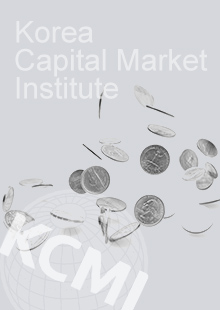Find out more about our latest publications

Study on Institutional Investors and Stock Market Stability: In OECD Countries
Research Papers 05-03 Jun. 21, 2005
- Research Topic Capital MarketsFinancial Services Industry
- No other publications.
Institutional investors are increasingly exercising a larger influence on equity markets throughout the world. The growth of institutional investors, such as mutual funds and pension funds, is expected to continue for a while as society continues to age. According to the Investment Company Institute (ICI) of the U.S., the AUM (assets under management) of global mutual funds has risen from $6.1trillion in late 1996 to $16.1 trillion as of late 2004. Global equity funds alone amount to $7.2 trillion, or a 45% of the $16.1 trillion AUM, which shows that the proportion of mutual funds in the stock market is considerably large.
In contrast, the influence of institutional investors on the Korean stock market is very small, and views have been continuously expressed that they have only served to increase volatility. As of the end of 2004, institutional investors accounted for 18% of total market capitalization in the Korea Stock Exchange (KSE). This figure, however, is a figure released by KSE and is somewhat of an overestimation by international standards, meaning that the actual share of institutional investors in the domestic stock market is probably much smaller. There is no theoretical evidence that capital market development is predicated on the presence of institutional investors. However, considering the circumstances and historical facts, the argument that a large presence of institutional investors helps establish capital market stability is valid. In this respect, more attention is being paid to issue of institutional investors and stock market stability.
The Definition of Institutional Investors and Review of Existing Studies
There is no internationally standardized definition and types of institutional investors. However, the most viable definition of institutional investors is “entities that make collective large-scale investments on behalf of clients, towards a specific objective in terms of acceptable risk.” Meanwhile, the OECD broadly classifies institutional investors into four types: insurance companies, investment companies, pension funds, and other institutional investors.
Existing studies on the inter-relationship between institutional investors and the stock market can be broadly categorized into those that study the institutional investors’ influence on equity returns, and those that study their influence on share price volatility.
Studies on their influence on the stock market conducted by researchers such as Edelen & Warner (2001) and Gompers & Metrick (2001) conclude that the stock holding and trading by institutional investors have a positive effect on stock returns.
Studies by researchers such as Reilly (1997) and Sias (1996) showed that the institutional investors play a role in reducing share price volatility. However, Sias (1996) argued that an increase in their stock holdings increased stock price volatility after identifying that the level of their stock holdings had a positive correlation with price volatility in the U.S stock market. Despite such assertions (1996), stock market experts and regulators tend to believe that the correlation between the two is negative.
The Current State of Institutional Investors in OECD Countries
The history, size and role of institutional investment in the capital market differ across countries. In practical terms, it is appropriate to look at OECD countries to assess the characteristics and role of institutional investors, as these countries have the most developed capital markets.
The financial assets of institutional investors in the OECD countries which amounted to only $11.9 trillion in 1989 rose to $35.5 trillion in 2001, recording an average annual growth rate of 9.6%. The stock holding of institutional investors is particularly noteworthy, growing by an annual average of 11.6% to reach $14.1 trillion as of 2001 and surpassing fixed-income securities to become the largest asset class. There are a number of reasons behind this trend, but the